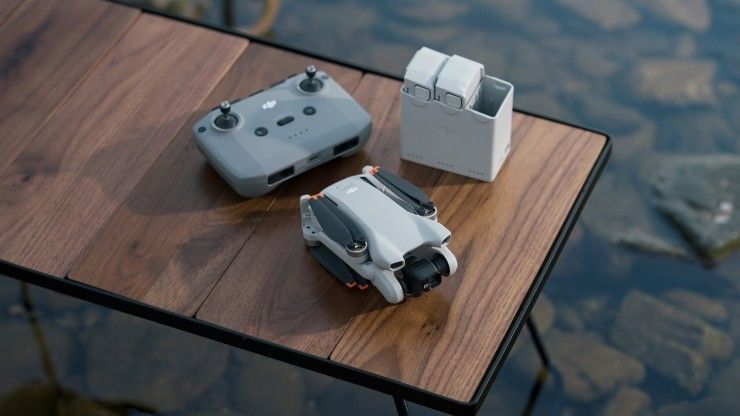
DJI offers more functionality under 250 grams with the new Mini 3 from DJI.
DJI has a wide variety of drones with a lot of purposes, but the Mini lineup has a special place in the market for one key reason—it's 249 grams (when used without rotor protectors). This keeps it under the 250-gram weight category. Anything over that (at least in the U.S.) requires Part 107 certification from the FAA to legally fly a drone for commercial purposes. So if you want to use it for filmmaking where money changes hands, you need certification. The 249-gram Mini can be flown without that certification.
The new DJI Mini 3 aims to keep the lightweight design with updated features to keep up with the competition. But does it?
Hot, Hot, Heels
Following hot on the heels of the Mini 3 Pro that came out in June, the Mini 3 offers a lower price point of only $409 when it ships in early 2023. That's a hefty 30% discount from the launch price of $699 for the Mini 3 Pro when it came out last summer.
That's particularly impressive since the two drones share so many features. Both have a gimbal that can rotate for vertical shooting for social media platforms, long flight times (51 minutes with the extended battery, 38 minutes normally), 48-megapixel stills, and 4K HDR video. So what's different?
Pro Is for Professionals
The DJI Mini 3 Pro offers more sophisticated tri-directional object avoidance technology, while the regular ol' Mini 3 lacks those object avoidance features. Tri-directional object avoidance is a great feature to have in a lot of complicated situations. If you are going to be flying close to buildings or trees, or anywhere else unpredictable, object avoidance can keep your drone in the air and out of danger. But those tools require extra horsepower for the processors, and extra sensors around the unit, and might not always be needed in a lot of more calm flying situations. Like for hobbyists and creatives just learning the ropes. 
The price savings here is significant. We think for most filmmaking applications, the Pro might make more sense since getting the coolest shots often requires you to fly near objects to get a great foreground wipe. But it's possible that depending on your use case and time to practice, you might not miss the object avoidance tech and just want the extra imaging features in a light body, in which case the Mini 3 is going to be a great fit.

The Right Fit
As always, if you want to fly drones for film work, we think it's worth it to get Part 107 certified (in the U.S.) to be able to fly heavier units legally. Part 107 training also comes with a lot of helpful information for keeping everyone safe while doing drone work, and is not particularly complicated or onerous. While you do have to take the test in person, it's a small price to pay.
However, if you are just starting out with drones, getting your feet wet, or just want to use them occasionally for location scouting purposes and rare picture shots, the DJI Mini 3 has proved incredibly useful for a lot of filmmakers.
Your Comment
1 Comment
You left out that the Mini 3-Pro has the 10-bit cine-D color profile which the Mini 3 doesn't
And also that the Pro shoots at 150mbs vs the mini 3 at 100mbs
These are both massively important to real filmmakers....
December 22, 2022 at 12:59PM